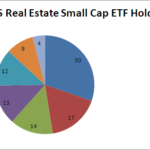With investors spooked by suspicions that the Greece bailout will be inadequate and the Euro zone debt crisis may spiral into Spain, Portugal and perhaps further, indices worldwide tumbled substantially for the first time in months, reminiscent of the 2%+ losses we were seeing daily during the financial meltdown of 2008-2009. Seeing as how investors that hung on during the collapse are now looking at returns in excess of 70% from the March lows in the S&P500 (SPY) and even more in higher beta sectors and stocks like Tech, Financials and Emerging Markets, it’s worth considering evaluating what some more defensive and hedged investments might look like.
Buying Volatility
The most direct play on market volatility is the Exchange Traded Note (ETN) that seeks to replicate returns in concert with the VIX volatility index itself, (VXX). During Tuesday’s trade, VXX was up an impressive 10% while the S&P500 (SPY) tumbled 2.4% and the Nasdaq (QQQQ) fell 3%. Note that while VXX is meant to track the VIX index, the daily and long term returns generally don’t match since VXX relies on futures and is subject to contango and offsets from monthly futures contract rolls. However, it is currently the best pure play on the oft-cited “fear index”. Investors thinking that Gold was that best proxy for a panicked market were surprised to see even various gold investments were down today. Alas, gold rallies when the US dollar falters, but even the USD showed strength today given comparative safety contrasted with fear overseas. If pure mayhem arises out of this Euro zone crisis, VXX could continue to run upward for some time to help hedge other long positions. VXX is down to $22 today but traded well over $100 per share during the financial meltdown. Somewhere in between during this mini-crisis would still present a nice hedged return for investors.
Short ETFs
For investors uncomfortable with shorting individual stocks or ETFs (margin account required, unlimited loss potential, other factors at play), there are ways to buy long positions in short instruments. For example, if looking to bet on a market decline, investors can take up a 1X short position so that by shorting the S&P500 with $3000 so if the S&P500 (SPY) declines 15% during a correction, they’ll have $450 to buy back into a recovery with some credit spreads or whatever they so choose. For investors seeking more bang for their buck thinking $450 doesn’t buy much when the rest of the portfolio is down $5000, there are several leveraged short ETFs as well, but these are much more destructive to your portfolio for a few reasons – first, the general trend over long periods of time is up, so these are guaranteed to be a losing trade over long periods. More insidious though, is the value decay that occurs over time with any leveraged ETF due to daily rebalancing. So, for a trade, consider the following below, but it would be unwise to “set it and forget it” for any of the below listed ETFs:
1x Short:
Short Dow30Â (DOG)
Short QQQÂ (PSQ)
Short S&P500Â (SH)
2X Short:
UltraShort Dow30Â (DXD)
UltraShort QQQÂ (QID)
UltraShort S&P500Â (SDS)
3X Short:
UltraPro Short Dow30Â (SDOW)
UltraPro Short QQQÂ (SQQQ)
UltraPro Short S&P500Â (SPXU)
There are myriad other long and short leveraged ETFs, but that’s the subject of another article. In essence, the highly leveraged ETFs serve as a useful tool for traders holding on the order or hours or days, but for the most part, the risk is not worth the potential benefit since you can actually lose money on these even if the underlying instrument is flat or moves in the direction you anticipated over time.
High Yield Investments
There are various types of high yield investments which may be appealing to investors seeking income, diversification or market protection, but they must be mindful that for individual issues, an excessively high yield (in excess of 10%) is often an indicator that the market is pricing in a reduction in yield or a solvency concern. Recent examples included Dow Chemical and many Financials when they were yielding 15% or more only to cut their dividends out of necessity to preserve cash. In the current environment, there’s more clarity around future payouts given the relative lack of market panic and dividend cuts as opposed to the current reality of comparative market improvement and dividend increases. Stable high yielders tend to offset volatility because of the percieved sustained income assuming their cash flow will allow for steady payouts during whatever crisis is brewing.
Nonetheless, there’s an additional level of protection offered through diversification with high yield ETFs and exchange traded notes (ETNs) which differ somewhat from ETFs. Some high yield diversified instruments in the 6%-8% return range include MLP (Master Limited Partnership) ETNs which combine high cash flow with favorable tax treatment, the Preferred stock ETF (PFF) which acts like a hybrid stock/bond in an improving environment for financials, as well as REITs, which also offer high single digit gains and must pay out 90% of income to investors under law (REIT List of dozens of such companies). Note however that real estate has continued to be and may very well be volatile for some time to come, but as long as solvency is not called into question, REITs have tended to offer an outsized yeild coupled with some correlation divergence from major indices.
Disclosure: No holdings in any ETFs or ETNs referenced in this article.











{ 0 comments… add one now }
{ 1 trackback }